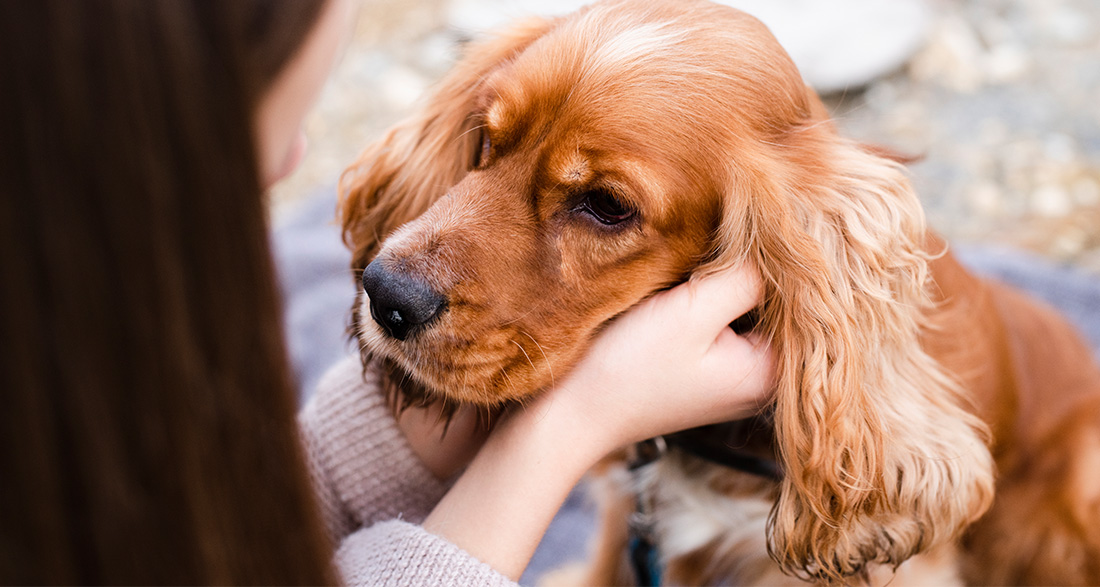Itching and purulent discharge from your female dog’s vagina are not good signs. These symptoms are typical of vaginitis in your dog, and a visit to the veterinarian is inevitable. In this guide, we delve into the details of the condition. Symptoms, causes, diagnosis, and treatment can be found here.
What is Vaginitis in Dogs, and How Does It Occur?
Vaginitis in dogs is an inflammation of the vagina. This condition, known as Vaginitis, affects younger female dogs more than those who have had puppies before.
Bacterial agents can be the culprits behind Vaginitis. These are usually normal components of your dog’s vaginal flora.
Typically, these microorganisms only lead to vaginitis when your furry friend’s immune system is weakened.
Other causes may include unhealthy or unbalanced nutrition. Inadequate hygiene can also be a trigger.
Certain infectious diseases, such as “Distemper,” can also be causative agents of Vaginitis.
If your dog’s uterus is inflamed, the bacteria from the uterus can penetrate the vagina and cause inflammation there.
What Symptoms Indicate Vaginitis in Dogs?

The most obvious sign of vaginitis in dogs is purulent discharge. The amount of discharge varies from one female dog to another.
Along with this, there is intense itching. As a result, your dog may lick the area more frequently.
This can lead to redness in the vaginal area. Swelling may also occur.
Some female dogs may show signs of discomfort. Occasionally, there may be a mild fever.
However, the mentioned signs do not always indicate vaginitis in dogs. Other diseases can also present with similar symptoms.
Caution
It is always important to have your veterinarian determine what is truly wrong with your dog. Only then is the correct treatment possible.
How is Vaginitis in Dogs Diagnosed?
To ensure how severe Vaginitis is in dogs and whether it requires treatment, you should consult your veterinarian.
The veterinarian examines the dog’s vagina for microorganisms. It is also essential to rule out other diseases.
The veterinarian can determine if the vaginitis occurs just before the heat. In this case, the symptoms usually disappear on their own when the dog enters heat.
However, there could also be extensive inflammation in the area of the uterus. Bacteria can enter the vagina and cause an infection.
The veterinarian will conduct a thorough examination of the vagina. Microorganisms are identified through a swab.
This allows for targeted treatment.
How is Vaginitis in Dogs Treated?

Simple inflammations usually heal on their own. The female hormone estrogen makes the mucous membrane more resistant.
If the trigger for Vaginitis is the diet, a change in diet is usually sufficient. A dog’s nutrition should be balanced.
Only in extreme cases, such as when there is inflammation of the uterus, should antibiotic treatment be considered.
Unfortunately, antibiotics destroy the entire bacterial flora, including the beneficial and essential bacteria.
Vaginal flushing is not the preferred method either. It is more sensible to clean the vagina with some clear, warm water and a cotton pad.
Sometimes, despite efforts, these “stronger” measures are necessary to control Vaginitis.
First Aid for Vaginitis in Dogs
It is crucial to eliminate the factors that favor vaginitis in dogs.
First and foremost, provide a hygienic environment for your dog. Clean your dog’s sleeping and resting areas thoroughly.
The bedding should be cleaned or washed thoroughly. Non-washable parts may need replacement.
Check your dog’s food for balance. Giving additional vitamins may be beneficial.
If a crusty layer forms in your dog’s vaginal area, you can remove it with a saline solution. Use lukewarm water with a pinch of salt.
How Can Vaginitis in Dogs be Prevented?
Not every form of vaginitis in dogs is preventable. However, you can observe a few rules such as hygiene and optimal nutrition.
Regularly change your dog’s blankets and wash them at high temperatures.
Germs thrive in warm and humid conditions.
If your dog has been bathed, make sure to dry them thoroughly, especially in the vaginal area.
Supplementation:
Probiotics can provide internal prevention. Probiotics activate good bacteria in the gut.
This strengthens your furry friend’s immune system, enabling better defense against infections.


